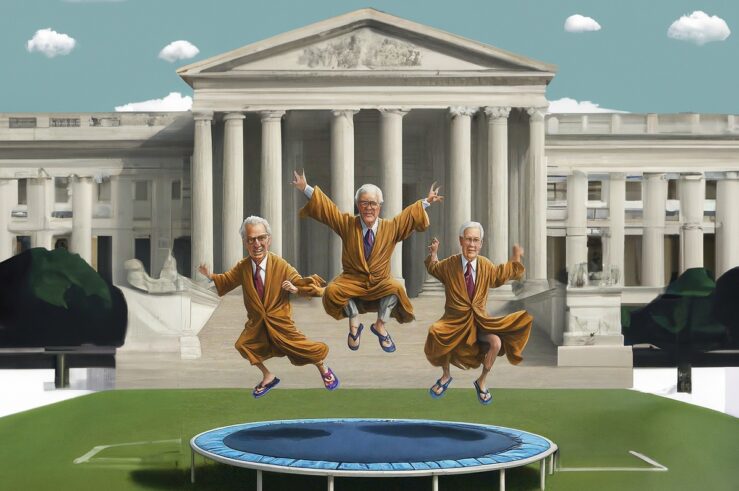A particularly unsettling aspect of the FTC’s case against McWane is the complaint counsel’s heavy (and seemingly exclusive) reliance on structural factors to prove its case. The FTC has little or no direct evidence of price communications and no econometric evidence suggesting collusion, and has instead spent a good deal of time trying to show that the market is susceptible to collusion. What makes the FTC’s administrative case so unsettling is that the structural factors they rely on are true of any oligopoly and, in federal courts across the country, are insufficient as a matter of law to raise an inference of conspiracy.
When there are a small number of actors in a market they naturally act and react differently than markets with many competitors. As an example, imagine it’s the final chess tournament between two capable opponents. At one point of the game one player makes a move knowing that it will likely force her opponent to make a move that will later work to her advantage. The opponent makes this move and the referees stop the match. The referees say the opponent moved in a way that was advantageous to the player who proves this game is rigged. The referees further explain that because there are only the two of them playing and because they know each other that this game of chess is susceptible to cheating. Because the game is susceptible to cheating, the referees declare, the evidence that the opponent made a move advantageous to player is all the evidence the referees need to stop the game.
Obviously the situation described in the chess example would never occur. It is common in two party games for one player to force another player into taking a particular move. No referee would stop a match with such flimsy evidence. However, the FTC seeks to find McWane liable of collusion under similar circumstances.
Ductile iron pipe fittings (DIPF) are commodities and the DIPF market is an oligopoly with only three major players: McWane, Sigma and Star. Each DIPF supplier constantly tries to monitor its rivals’ prices because if a competitor undercuts it, its sales volume will fall. Each DIPF supplier is also susceptible to rising costs caused by market conditions and has similar motivations to raise prices to account for rising costs. Complaint counsel argues that these characteristics make the fittings market “susceptible” or “conducive” to collusion, which shows a motive to conspire. The Administrative Law Judge (ALJ) did not find complaint counsel’s argument persuasive.
The collusion case against McWane came down to whether there was an agreement among competitors to curtail project pricing. As such, the ALJ sought to determine whether or not the evidence shows: (1) a prior understanding among the Suppliers, including McWane, that each Supplier would curtail Project Pricing; (2) a commitment to one another to curtail Project Pricing; (3) a restricted freedom of action and sense of obligation to one another to curtail Project Pricing, and (4) an actual reduction in the amount or level of Project Pricing. Consistent with prevailing federal court caselaw, the ALJ demanded evidence indicating an “actual, manifest agreement” and found that evidence lacking.
Unfortunately for complaint counsel, the evidence it put on is also suggestive of interdependence and conscious parallelism among oligopolists, which are not violations of the law. It was in McWane’s interests to get its competitors to curtail project pricing so it could better determine the real prices it needed to “further its own legitimate business interests of increasing volume . . . in order to beat prices being offered by its competitors, which is a procompetitive purpose.”. McWane used its position as a price leader to make a move that it hoped would force McWane’s competitors to reduce project pricing. Despite large raw material cost increases, McWane refused to raise published list prices to the high levels Sigma and Star had announced, and it set its regional multipliers in such a way that would pressure those competitors to match its lower multipliers and, it hoped, to reduce their project pricing.
McWane’s strategy did not require or lead to an “actual, manifest agreement” on multipliers or project pricing, as complaint counsel alleges. The ALJ found that “If Sigma and Star declined to adopt McWane’s new multipliers, the new multipliers could be easily withdrawn or revised.” The ALJ determined that McWane’s move was not irrational because McWane could still easily react based on the behavior of its competitors. Indeed, the ALJ found that it was “undisputed that Project Pricing did not stop,” and found no evidence that Project Pricing declined at all.
On the collusion issue, the ALJ rightly found that price maneuvering in an oligopoly is not a violation without sufficient evidence to show there was an actual, manifest agreement. If the FTC were to do so it would open many markets up to additional risk. It would also be impossible to craft a remedy without grossly interfering with the normal operation of the market. In this, the ALJ reiterated the sentiment of the First Circuit – “How does one order a firm to set its prices without regard to the likely reactions of its competitors?”
The FTC Commissioners should not hold a company guilty of collusion simply for being a part of an oligopoly. As the ALJ stated – “accepting Complaint Counsel’s position that oligopolistic interdependence is a ‘plus’ factor would, in effect, foist a nefarious motive upon the Suppliers merely because they conduct their business within an oligopoly market. This is not the law.” The ALJ was right, and it would be inconsistent with well-established federal court caselaw to rule otherwise. The FTC should not be subject to one rule in federal court, but another for its own internal administrative court.




